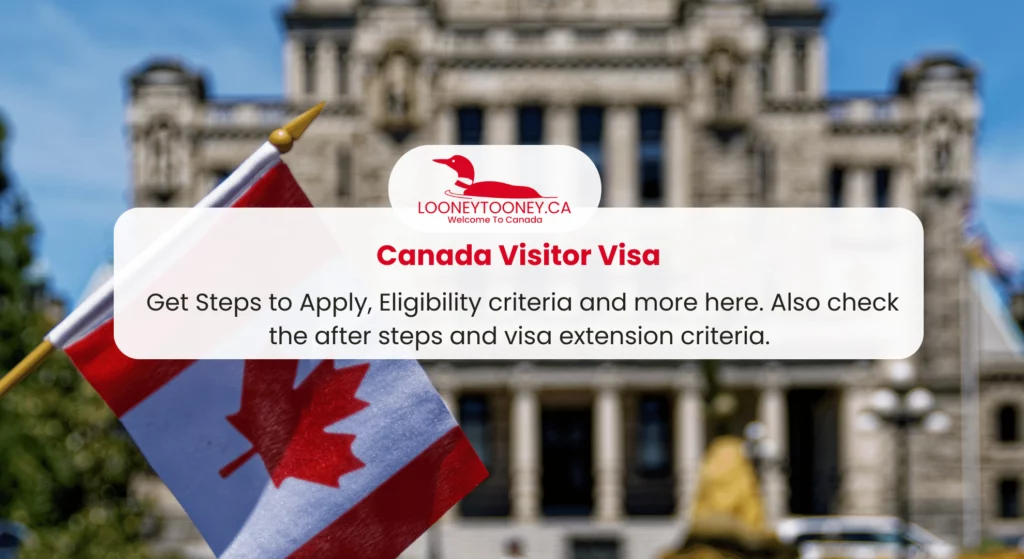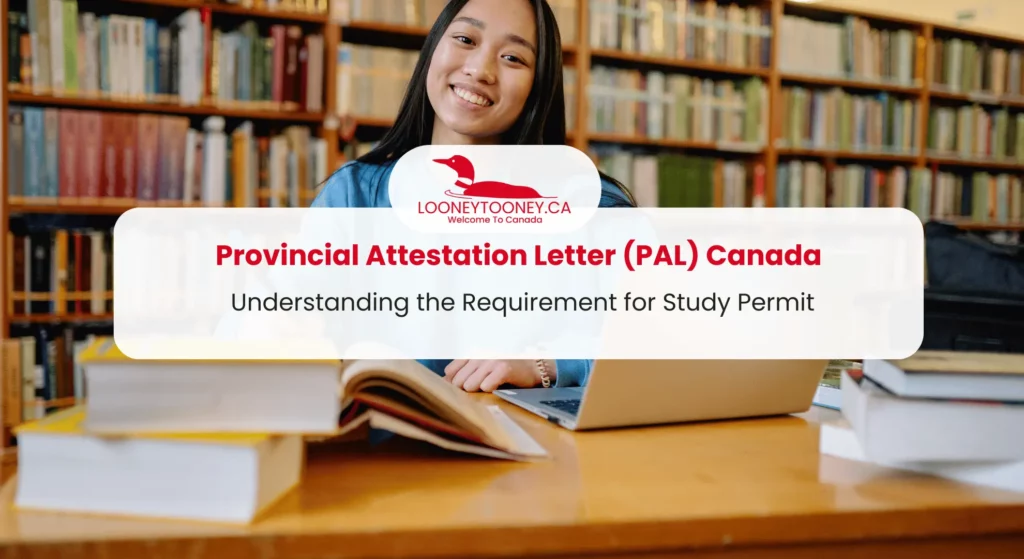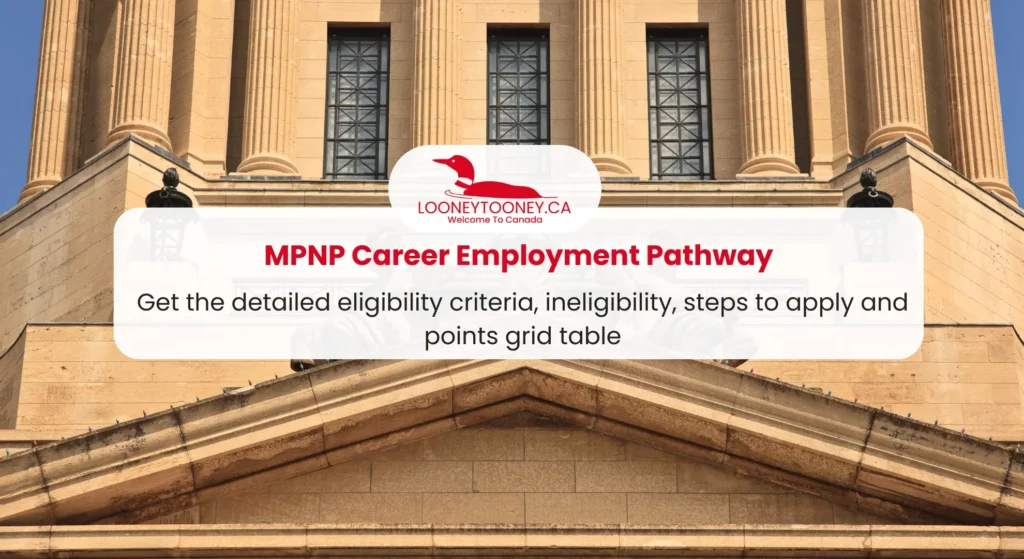A Canada visitor visa, also known as a temporary resident visa, is an official document affixed to an individual’s passport, indicating that they fulfill the necessary criteria for entry into Canada.
Most travelers are required to obtain a visitor visa when traveling to Canada. Additionally, it may be necessary for those passing through a Canadian airport en route to their ultimate destination.
The Canada Visitor Visa is a direct application that enables individuals to visit Canada for up to a period of 6 months. There are two types of visas available: Single-entry visas allow entry into Canada once, while multiple entry visas permit travelers to come and go as often as they wish throughout the visa’s validity. When applying, applicants are automatically considered for multiple entry visas; single-entry visas are only granted under exceptional circumstances.
Multiple entry visitor visas offer the flexibility to visit Canada numerous times within a six-month duration while the visa remains valid.
Crucial aspects of Canada Visitor Visa include:
- It is solely for leisure or tourism purposes.
- Using the visa for work or work-related applications is not permissible.
- Travelers can bring along their dependents and children.
- Usually, the visit visa is issued within 27 days after submission.
Table of Contents
- Duration of Canada Visitor Visa
- Eligibility of Canada Visitor Visa
- Steps to apply for Canada Visitor Visa
- Aftersteps of Canada Visitor Visa
- Extending a Visitor Visa
Duration of Canada Visitor Visa
Individuals have the option to apply for a visitor visa online. The standard duration for most visitors in Canada is up to 6 months.
It’s essential to confirm the need for a visitor visa before applying. The necessity of either a visitor visa or an Electronic Travel Authorization (eTA) is contingent on:
- the type of travel document intended for the trip
- the country that issued your travel document
- your nationality
- your mode of travel to Canada for the visit.
Canada offers two variations of visitor visas: single entry visas and multiple entry visas. A single entry visa enables foreign nationals to access Canada on a one-time basis. Conversely, a multiple entry visa provides the freedom to enter and exit Canada as desired, as long as the visa remains valid. Applicants are automatically considered for multiple entry visas and are only granted single entry visas under unique circumstances, eliminating the need for applicants to select a specific type when applying.
Multiple entry visitor visas allow holders to visit Canada for periods of up to six months as frequently as desired while the visa remains valid. The validity period can extend up to 10 years, yet the exact duration is determined by the issuing visa officer. In instances where an individual possesses a status document such as a study or work permit and isn’t visa-exempt, they are automatically issued a visitor visa to enter Canada and acquire their permit.
Typically, this issued visa is of the multiple entry kind. Furthermore, for individuals temporarily leaving Canada during studies or temporary work, re-entry doesn’t demand a new visitor visa as long as both the permit and visa retain validity.
Eligibility of Canada Visitor Visa
Any individual seeking entry into Canada, excluding Canadian citizens, permanent residents, or those exempt from visas, must obtain a visitor visa. Canadian permanent residents, even with an expired permanent resident card, cannot apply for a visitor visa and should seek a Permanent Resident Travel Document (PRTD) instead.
Canadian citizens, including dual citizens, are not eligible for a visitor visa; they must travel using a valid Canadian passport. For individuals transiting or visiting Canada for business purposes (not as temporary foreign workers), a business visa may be required.
To be eligible for a visitor visa, certain fundamental criteria must be met. Applicants must:
- Possess a valid travel document, such as a passport.
- Be in good health.
- Have no record of criminal or immigration-related convictions.
- Demonstrate to an immigration officer that they have ties—such as employment, a residence, financial assets, or family—that firmly bind them to their home country.
- Convince an immigration officer of their intention to depart from Canada upon the conclusion of their visit.
- Have sufficient funds to cover their stay. The required amount of funds depends on the duration of the stay and the accommodation arrangement, whether in a hotel, with friends, or with relatives.
- In some cases, a medical examination and a letter of invitation from a Canadian resident might also be necessary.
Visa Exemption for Entry into Canada
Apart from Canadian citizens and permanent residents, individuals exempt from needing a visitor visa to enter Canada are those falling under the category of visa-exempt. Canada has arrangements with various nations that waive the necessity of a visa for their citizens to visit Canada for a duration of up to six months. For those from visa-exempt countries traveling to Canada by air, a valid electronic travel authorization (eTA) is required.
For travel by land or sea, a valid passport from a visa-exempt country is the sole requirement, with the exception of citizens of the United States. Given the extensive and peaceful nature of the Canada-U.S. border, where numerous Canadian and U.S. citizens cross daily, U.S. citizens can enter Canada with a valid U.S. passport without needing a visitor visa or eTA, provided their stay does not exceed six months. U.S. permanent residents (Green Card holders) are considered visa-exempt, irrespective of their citizenship. They are obliged to possess an eTA for air travel or transit through Canadian airports, and must present a valid Green Card alongside a valid passport for entry into Canada.
Steps to apply for Canada Visitor Visa
Follow these instructions to apply for Canada Visitor Visa
Step 1: Read the list of documents
Firstly, begin the process by acquiring the necessary documentation that serves as evidence demonstrating that you fulfill the requirements for a Canada visitor visa. These documents typically include personal identification such as a passport, proof of financial stability to support your stay in Canada, a detailed itinerary of your trip, and any other relevant supporting materials.
Ensure that these documents are up-to-date, accurate, and in line with the specific criteria set forth by the Canadian immigration authorities for a visitor visa. It’s essential to thoroughly review and gather all the essential paperwork needed to present a comprehensive and convincing case for your visit to Canada. This step serves as the foundational stage in the application process, as the accuracy and completeness of these documents significantly impact the evaluation of your visa application.
Step 2: Create an Account
Initiate the process by signing in through the official IRCC online portal. You can also sign up to the IRCC account. Go to the IRCC portal and use an email address and password. IRCC now requires two-factor authentication. You can verify your email address for this and login again.
Step 3: Go to the form
After logging in to the IRCC portal, scroll down and go to the menu that reads “Visit ”. Click on it and read the special instructions if you are from Iran or Syria. If not click on “Apply for a visitor visa”.
This will take you to the main page. On the top section, click “Apply”.
If you have a Venezuelan passport, there will be special instructions for you. If not, scroll down and go to “Why are you applying for a visitor visa?” Select your purpose and click on get instructions. If you have a passport for a stateless person, you will not be able to proceed. If you do not have one, then you can click on “Apply for a Visitor Visa”.
Then you will be asked, who are you applying for, select the answer. Then it will ask you if you have an application in process. If you have, then you are required to wait for 30 days. If you don’t have it, it will take you to the page where you will be required to sign in.
Step 4: Fill the form
Sign in again. This time your homepage will have all the applications you have made in IRCC till date. For applying for a visitor visa again click on the Visit menu on your homepage. You will get a pop-up that will ask you to fill the questionnaire.
Fill in the required fields with accurate personal information.
Step 5: Upload Your Documents
Once your questionnaire is successfully filled, proceed by uploading the necessary documents essential for your visa application. Ensure that the documents are well-organized, valid, and meet the specified requirements. These may include identification, financial statements, travel itinerary, letters of invitation, and any additional supporting papers. Utilize the designated upload feature within your account to securely submit these documents in the appropriate format as requested.
Step 6: Pay Your Fees
Following the document upload, complete the necessary payment process associated with the visa application. Use the provided secure payment methods within your account to settle the required fees. Ensure the accuracy of the payment details and verify the amount to be paid, as stated. Upon successful payment, your application will proceed to the subsequent stages for evaluation and processing. You have to wait for 14-30 days to get the confirmation from IRCC.
After steps of Canada Visitor Visa
Step 1: Give your biometrics
1. Payment of the Biometric Fee
When submitting your application, ensure to pay the associated biometric fee to avoid potential delays.
Exception: No fee is required for providing biometrics for a transit visa.
2. Obtain the Biometric Instruction Letter
Upon successful payment of the biometric fee, you will receive a confirmation letter specifying the requirement to provide biometrics and detailing the location where this process can be completed.
Remember to bring this letter along with your valid passport when presenting your biometric information.
Step 2: Processing your visitor visa application
The authorities will review the application to ensure all necessary documents are included. If the application is incomplete, it will be returned without processing.
Applicants might be asked to:
- Attend an interview with officials in their country.
- Submit additional information.
- Undergo a medical examination.
- Provide a police certificate.
Instructions will be provided if any of these actions are necessary.
Most applications are typically processed within a few weeks. Processing times may vary depending on the specific visa office. Once the application is processed, the passport and other original documents will be returned. However, original bank statements or documents identified as fraudulent will not be returned.
In case of application approval:
For online applications, two letters will be accessible in the IRCC account: a decision letter and a letter containing instructions for passport submission. However, approval does not grant immediate travel permission to Canada; applicants must wait for the visa to be placed in the submitted passport.
For paper applications, upon approval, all original documents, including the passport containing the visa, will be returned to the applicant.
If the application is declined:
For online submissions, the decision will be available in the IRCC account, providing a detailed explanation for the refusal.
For paper applications, an explanation for the refusal will be dispatched, along with the return of all original documents, including the passport.
Step 3: Before you travel to Canada – Documents you need
If you were invited to Canada by an individual or organization and received a formal invitation letter, it’s advisable to carry this letter with you. A border services officer might request to review it.
When traveling with a child under the age of 18 (a minor child), potential documents required to be presented include:
- A letter granting authorization for the minor child to travel to Canada.
- Additional documents like adoption papers or a custody decree might be necessary, contingent on whether the minor child is traveling alone or accompanied.
Step 4: Your arrival in Canada – Documents you need
Possessing a valid visa and travel document does not automatically guarantee entry into Canada. Entry eligibility is assessed against specific requirements set by Canadian authorities.
Upon arrival, officials verify your identity to ensure it matches the approved traveler for entry into Canada. At major Canadian airports, entry involves an automated fingerprint check at primary inspection kiosks, cross-referencing the collected information from your application.
However, at a land port of entry, fingerprint verification may occur if referred to secondary inspection by border services officers for a detailed examination. This involves the use of a fingerprint verification device.
Step 5: Upon your arrival in Canada – Documents you need
Although possessing a valid visa and travel document is essential, it does not guarantee automatic entry into Canada.
We assess whether you meet all entry requirements. Upon your arrival, our priority is to verify your identity, ensuring you are the approved individual for entry into Canada.
If you arrive at one of the four major Canadian airports: At a primary inspection kiosk, your fingerprints will be automatically checked. The system cross-references this information with the data collected when your application was submitted.
If you enter Canada at a land port of entry: If directed to a secondary inspection, your fingerprints may be checked using a fingerprint verification device by a border services officer to validate your identity.
Upon successful completion of the identity check and health assessment, and fulfilling the entry prerequisites, the border services officer might stamp your passport or specify the duration for your stay in Canada, typically for up to 6 months.
In certain situations, the officer could either curtail or extend your permitted duration in Canada, contingent upon the purpose of your visit. If uncertain about any aspect, it’s recommended to ask questions.
Providing false or incomplete information will result in denial of entry into Canada. The officer needs to be assured that:
- You meet the criteria for entry into Canada.
- You intend to depart Canada within the approved duration of stay.
Extending a Visitor Visa
Extending the duration of a Visitor Visa in Canada is a process available to individuals seeking to prolong their stay beyond the initial six-month period permitted by either a single or multiple entry visa. When your legal status is set to expire after this initial period, you must exit Canada unless you’ve successfully applied for an extension while your current status remains valid. It’s crucial to submit your extension application at least 30 days before your current visa is set to expire.
Should your visa lapse while your extension request is under review, you’re allowed to stay in Canada until a decision is reached, under what is termed as implied status. Additionally, eligible individuals may explore applying for permanent resident status through one of Canada’s immigration programs.
In conclusion, the process of obtaining a Canada visitor visa involves several key considerations and steps. Understanding the types of visas available, the necessary documents, and the entry requirements is essential for a successful application. The visitor visa allows individuals to explore the diverse landscapes, culture, and attractions of Canada for a temporary period, typically up to six months.
However, entry into Canada is subject to verification of identity, adherence to health assessments, and meeting entry criteria by the border services officer. It’s crucial to provide accurate and complete information during the application process and comply with the regulations outlined by the officer to ensure a smooth and rewarding visit to this beautiful country. With proper preparation, adherence to guidelines, and genuine intentions, applicants can experience the warmth and splendor that Canada has to offer during their visit.
Canada Visitor Visa FAQs
Q. How many months does the Canada visitor visa allow for stay?
A. Most visitors under a Canada visitor visa can remain for a duration of up to 6 months. However, upon entry, a border services officer may permit a shorter or longer stay, specifying the departure date in your passport accordingly.
Q. How much is the required funding for a Canada visitor visa?
A. The fee for a Canada Visitor Visa is CAD$100 per person. Additionally, if biometrics submission is necessary, an extra CAD$85 is incurred. Thus, the overall cost for the visa application amounts to CAD$185.
Q. What serves as proof of funds for a Canada visitor visa?
A. Proof of funds required for covering travel expenses in Canada can be demonstrated by providing original bank statements from your personal account spanning the previous six months, along with the last six months of pay slips, especially if you are self-financing your trip.
Also, check





